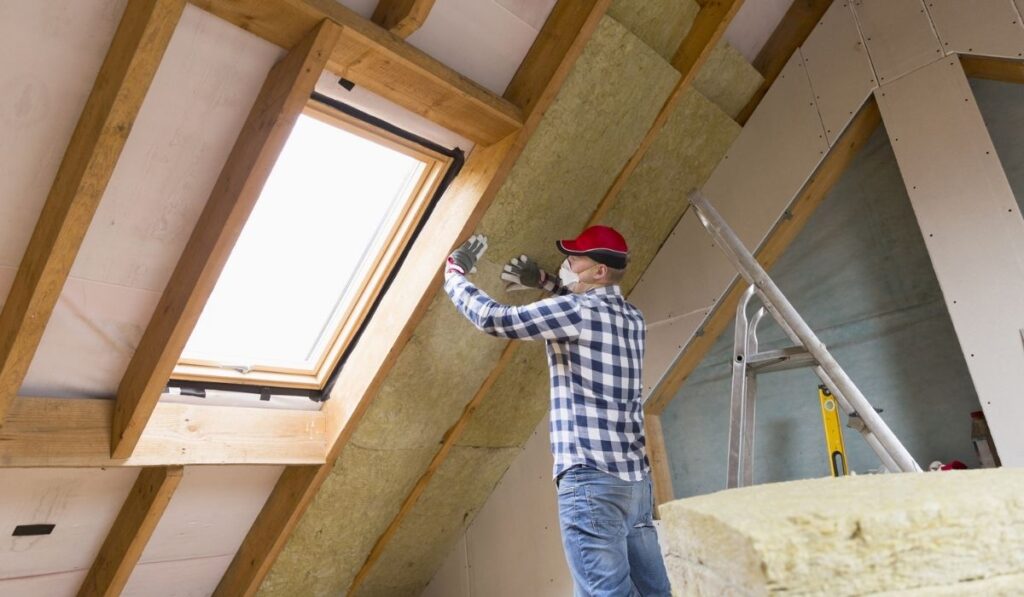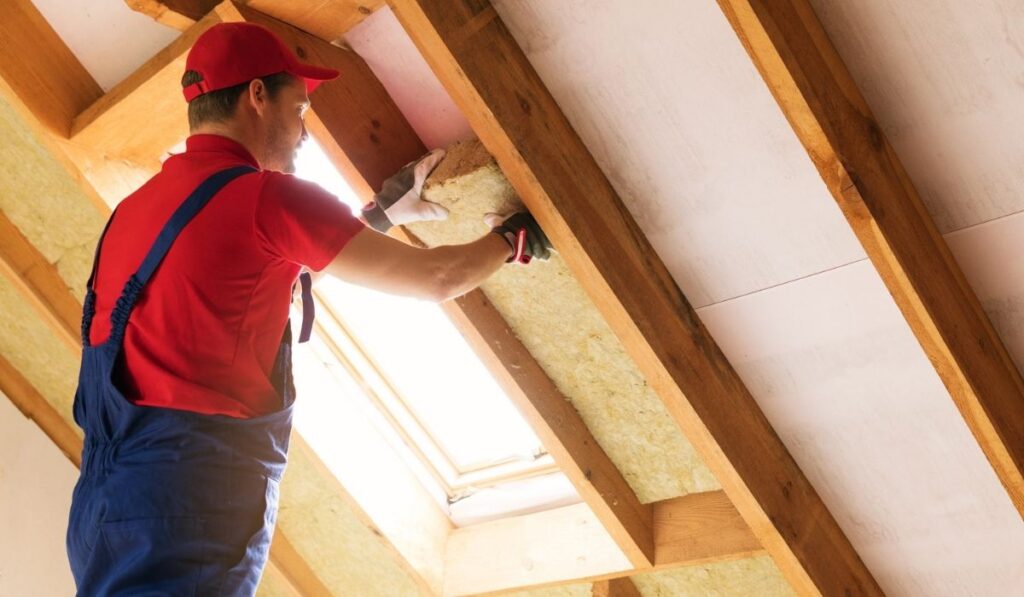Attic insulation is directly related to the energy efficiency of your home. It acts as a buffer and keeps the warmth in during winters and out during the summer. Usually, the more insulation you have, the better protected your home is. But can you have too much insulation in the attic?
You can have too much insulation in your attic. When you have more than recommended, it lowers the energy efficiency and cost-benefit of the investment. Excess insulation can hinder the airflow and cause moisture buildups, developing into mold and mildew. It contributes to poor indoor air quality.
Homeowners spend a lot of money and effort to make their homes energy-efficient. This means that sometimes they may go a little overboard with the insulation. The home’s insulation should breathe well and not make a barrier or a “blanket” for air to circulate correctly. To help you avoid costly mistakes, let’s look at how to determine if your attic has the right amount of insulation and what to do if you have too much.
Is it Possible to Have Too Much Attic Insulation?

Yes, it’s possible to have too much insulation in the attic – it just doesn’t happen too often. The optimum amount of insulation depends on the climate you live in. Insulation effectiveness is measured in R-value – the higher its R-value, the less the rate of heat flow is.
But high R-value doesn’t essentially mean high efficiency. For example, in a hot climate like Florida, an attic insulation R-value between 22-30 is considered enough, while it’s up to R-60 in Maine.
So even if you double up the attic insulation in Florida, it’s not going to have a major effect on the room temperature. Unfortunately, it’ll only reduce the airflow, making the house stuffy and vulnerable to mold due to moisture retention. Plus, the cost to install insulation won’t be efficient either.
How Can You Tell if There’s Too Much Insulation in Your Attic?
Over-insulation isn’t the first guess of homeowners when it comes to insulation problems. Most people usually blame the air ducts, windows, doors, or water heater – anything but the insulation.
But, in reality, unvented attics and non-functional attics can cause many issues in your home. When there’s too much insulation, the following symptoms become noticeable.
Signs of Attic Over-Insulation
- Your home heats up quickly and reaches uncomfortable temperatures even when the outside temperature is low.
- The warmth stays for a long time, even when you turn the heating off.
- It seems stuffy and humid inside the house, and you often feel it’s difficult to breathe properly.
- You notice the air at home smells stale and dusty, and there are signs of mold growth around the house.
- There’s a buildup of moisture and condensation on the windows, walls, and other surfaces in your home.
You can also do a visual check on your attic insulation, but most homeowners can’t distinguish if their attic has excessive insulation. You can, however, compare your attic insulation with the recommended amount in your area. The rule of thumb is it should cover the ceiling joints adequately but shouldn’t be so high as to block the vents.
If you want to be sure about your attic insulation, call a professional. They test insulation with infrared cameras and can tell the difference in temperature in different parts of the home.
Though it seems benign, too much insulation in your attic can cost you in the long run. It retains a lot of moisture which may damage the structural foundation of your home. Mold growth can also cause poor air quality, respiratory problems, and allergies.
What is the Proper Amount of Attic Insulation?

R-value is the ultimate measure of insulation in your attic. It measures the ability of your attic insulation to resist heat transfer – a higher R-value means more effective insulation. On average, an R-38 with 10-14 inches of insulation is recommended for moderate climates.
Different types of insulation material have different R-values, so the overall recommendation for attic insulation is based on different factors.
Factors to Determine the Proper Amount of Attic Insulation
The Type of Insulation You Use: Loose-fill or batts? Batts have insulating material rolled and pre-cut to fit standard attic cavities. They’re a popular choice because of their easy installation and moisture barrier.
In loose-fill, the insulation fibers are blown and layered in the attic directly. Batts have a higher R-value than loose-fill, so you get more insulation per thickness.
The Type of Material You Use: Fiberglass, cellulose, or wool? Fiberglass is the most popular choice for higher R-values, while cellulose is a favorite choice for its low cost and eco-friendly properties. Wool insulation has a lower R-value than both. All insulating materials are more efficient when compacted into batts.
How Thick the Insulation Is: Thickness varies from 10 to 17 inches. Obviously, the thicker the insulation, the higher its R-value.
The Location: Is it in a hot or cold climate? The U.S Department of Energy has recommended insulation levels for different climates. As you know, the average temperature becomes colder as we move from South to North, so the recommended insulation levels increase as well. Let’s see the minimum recommended insulation levels based on the region you live in:
- Zone 1: R-30 with 9 inches of insulation
- Zone 2: R-30 with 9 inches of insulation
- Zone 3: R-49 with 9 inches of insulation
- Zone 4: R-38 with 11 inches of insulation
- Zone 5: R-38 with 11 inches of insulation
- Zone 6: R-49 with 14 inches of insulation
- Zone 7: R-60 with 17 inches of insulation
These are just minimum values – the exact R-value you need depends on your situation. Most colder regions need much more insulation than given above.
You can calculate the R-value of your insulation by multiplying the per inch R-value of insulating material by the total thickness of your insulation.
Should You Remove Insulation If There’s Too Much?
As we have mentioned above, it’s pretty tricky to diagnose the problem, so if you think there’s too much insulation, first consult a professional to test your attic insulation.
If it’s 100% certain that you’re dealing with over-insulation, then discuss with your insulation contractor to remove the extra. Always get professional help for the task because it can potentially damage the structural foundation of your home. Obviously, you won’t want that to happen.
Sometimes excess insulation is the only problem around vents. A contractor can access the situation and only remove the insulation that’s stopping airflow. That’ll save you a lot of money and time.
Another point is that your excessive attic insulation is probably already damaged due to excessive moisture and may be infested with mold. In that case, it’s safer and essential to remove the insulation entirely and replace it. Sometimes contractors save the clean chunks and reuse them with the new layers.
Over insulation isn’t very common and usually only happens you re-insulate your attic and end up with a thicker layer. In that case, we have a word of caution for houses built before 1990. Older homes may have vermiculite insulation below new layers.
The material itself is not harmful, but it’s hazardous because all vermiculite before 1990 originated from Montana mines contaminated with asbestos. Make sure you hire a professional to remove the insulation and take all necessary precautions.
